Estimated reading time: 11 minutes.
The metabones Smart Adapter IV is the forth generation of an EF to E-mount adapter, promising full functionality between Canon lenses (IS, aperture and even AF) and Sony cameras. It covers the whole full frame image circle since the third generation, and its a very popular piece on most A7 users kits, greatly improving the lens choice. But how about its build quality, AF performance and even the image quality? Does it really work? Or will it flop? Let’s find out!
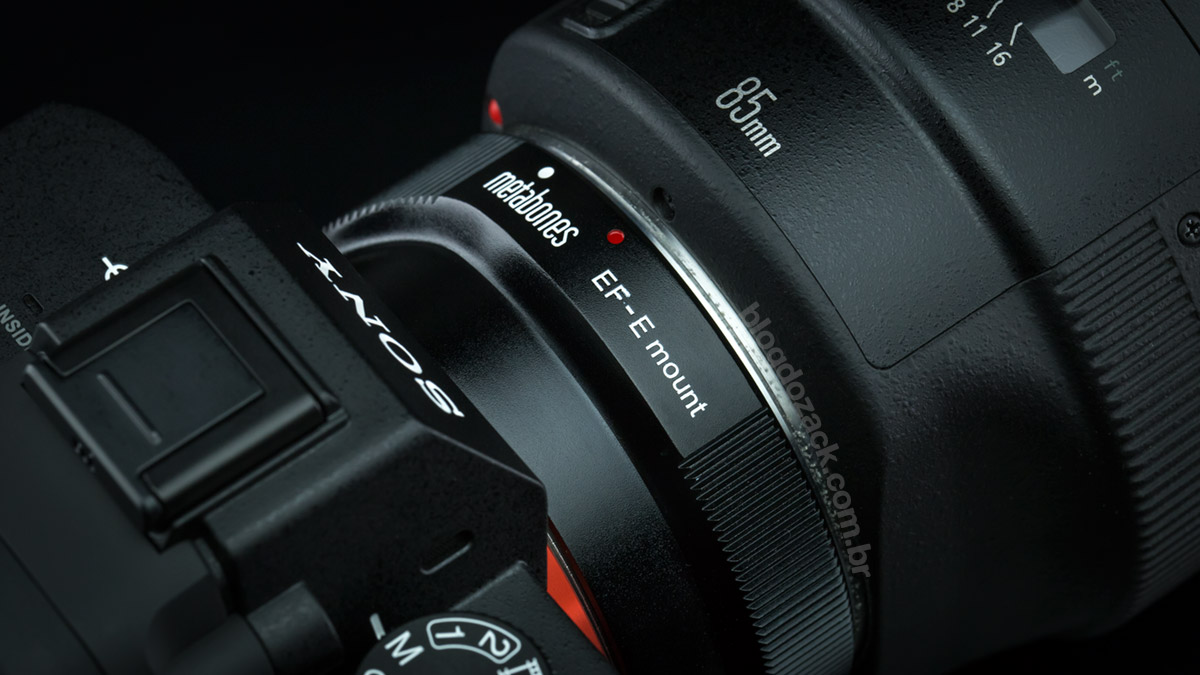
I praise what metabones delivers for US$399: a solid piece of aluminium, chromed brass mounts and perfect fit. All the letters are engraved in the metal, each mount is held by six screws and there’s even a removable, metal tripod foot on the adapter itself. Even the included case is impressive: a high quality, translucent hard plastic that includes two L-shaped keys to tighten/loosen the screws. Canon charges you U$499 for an EF Extender 2XIII that comes with a mediocre fake-leather bag. But the Smart Adapter is expensive, made for a lifetime.
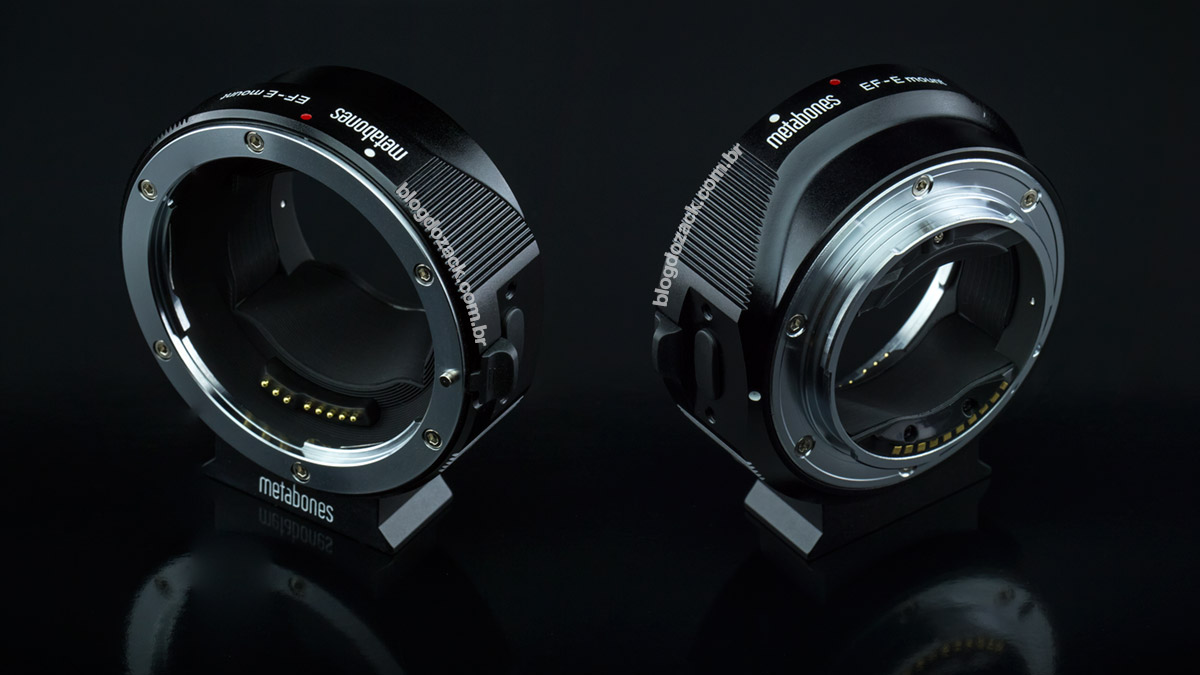
Front and back: EF to E-Mount with electronic contacts, and first class finishing. It’s well worth the US$399 price tag.
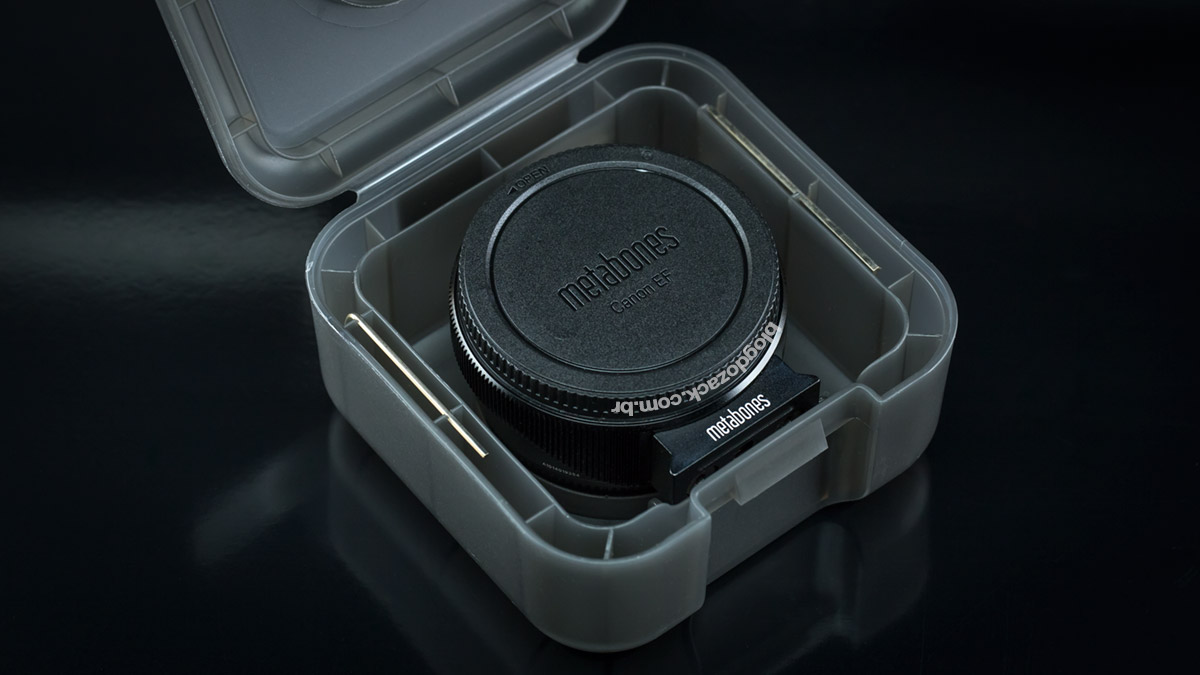
In the box: complete key set and awesome case. It will last a lifetime if well kept.
Facing the photographer, on the left there’s the lens release, unfortunately made of plastic and small, fragile, besides metabones guaranteeing it’s reinforced inside. I used it for a single month and can’t really comment on its durability. But the Canon EF to EOS M adapter has a much larger lens release button, and I wished the same for the “meta”. Also on the left there’s an USB port for firmware updates. It’s factory compatible with Canon EF and EF-S lenses introduced after 2006, so beware with Sigma, Tamron and other third party EF mount lenses that might not work.
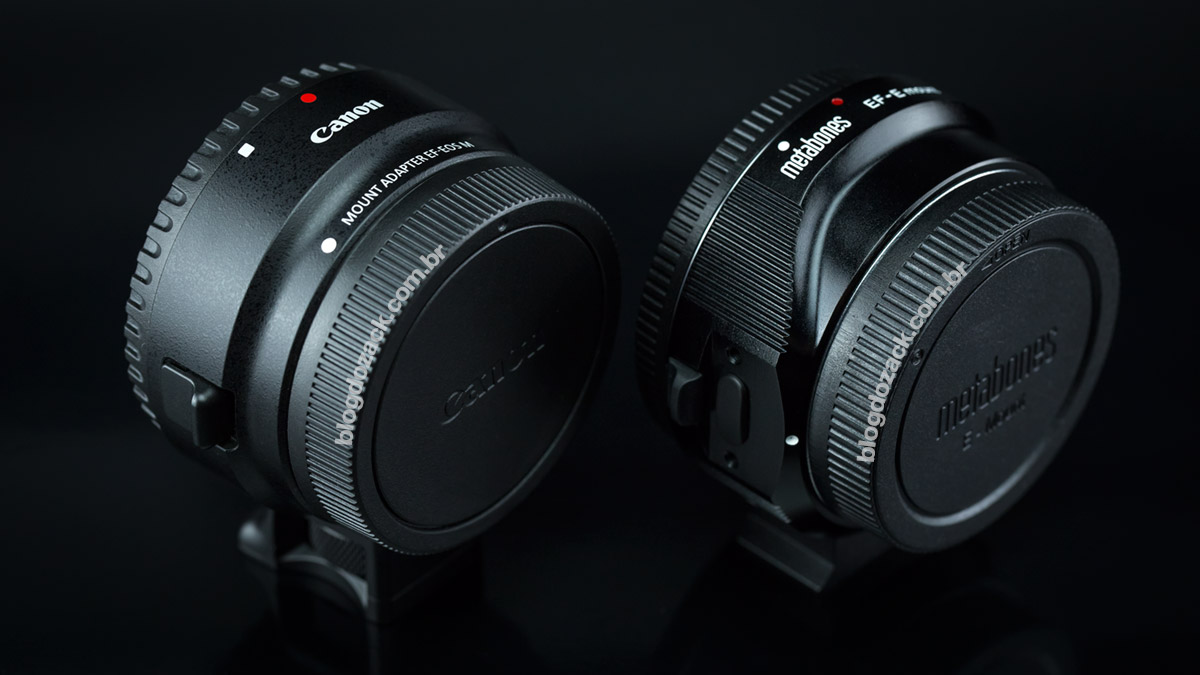
Together with the Canon EF-EOS M adapter, notice how the metabones release button is small. Canon’s ergonomics are always top notch.

There’s a USB port for firmware updates. There’s an active fan base updating it constantly on internet forums.
Lower around the barrel there’s a button for selecting green or advanced modes. These modes are selected before you mount the lens: with the camera on, hold the button before mounting the lens to activate the “advanced mode”. With a standard mounting (camera off), the metabones adapter works is green mode. It bypass the Sony E-mount “always-on” aperture control during Live View, like native FE lenses, and theoretically saves battery power from your Alpha camera.
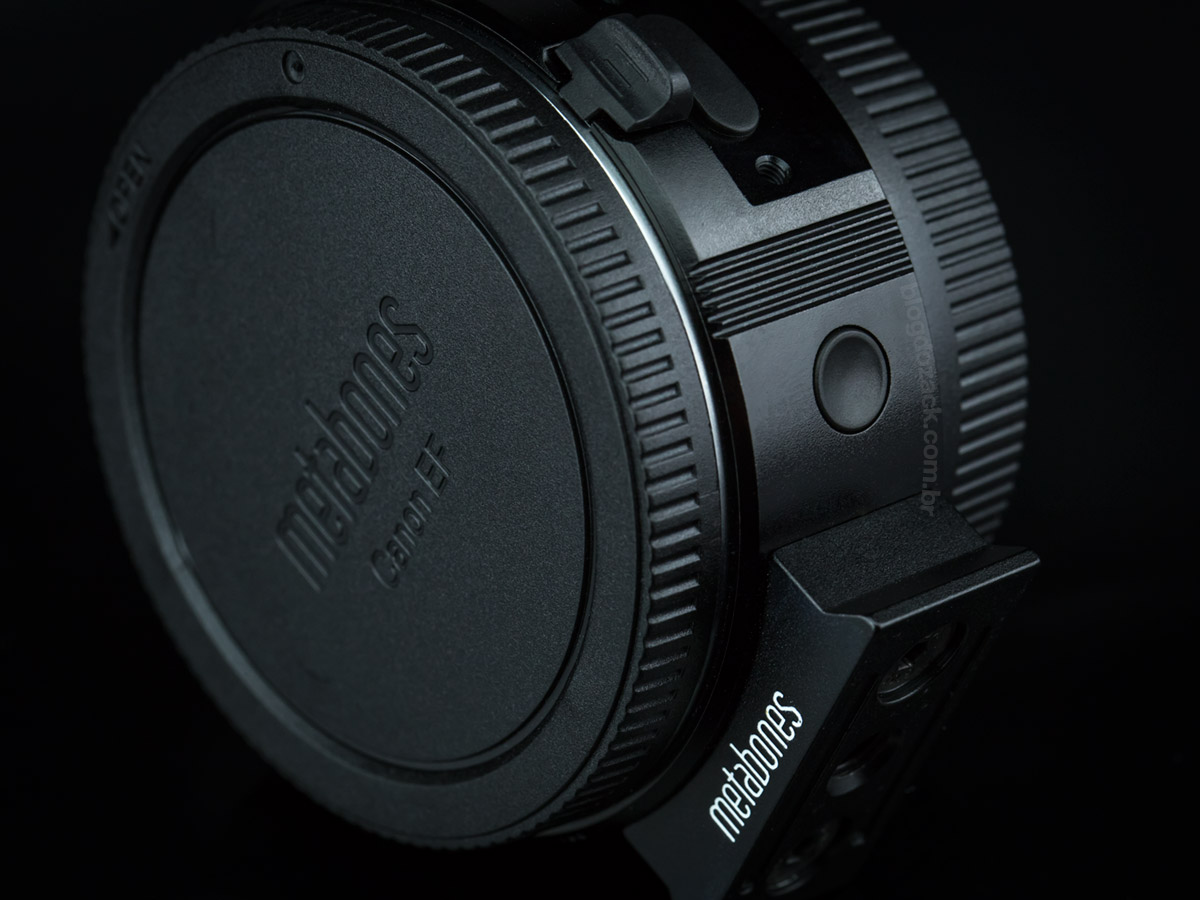
It’s right where you’re left thumb supports the lens, with a light click in order to operate.
On “advanced” mode the metabones adapter makes your Canon lens behave like Sony FEs. The aperture will be adjusting itself all the time during Program AE (DOF Preview) and the manual focus magnification works automatically. Which mode is better? Honestly, leave it on green mode and be happy. I didn’t even know there was an “advanced” mode until I wrote this review. :-D
Inside the barrel is black to avoid light leaks and reflexes, and it’s another online trolling madness. Some say certain lenses generate flaring with the metabones adapter. During my tests with the Canon EF 50mm f/1.8 STM and Yongnuo 50mm f/1.8 it didn’t happen, so I won’t comment on the topic. But there’s even a new “taped” version available named Smart IV MB_EF-E-BT4 while the one I have is MB_EF-E-BM4. If something happens there’re even downloadable blueprints to cut and paste black matte tape inside the adapter. If it’s wrong, the internets will do it right!
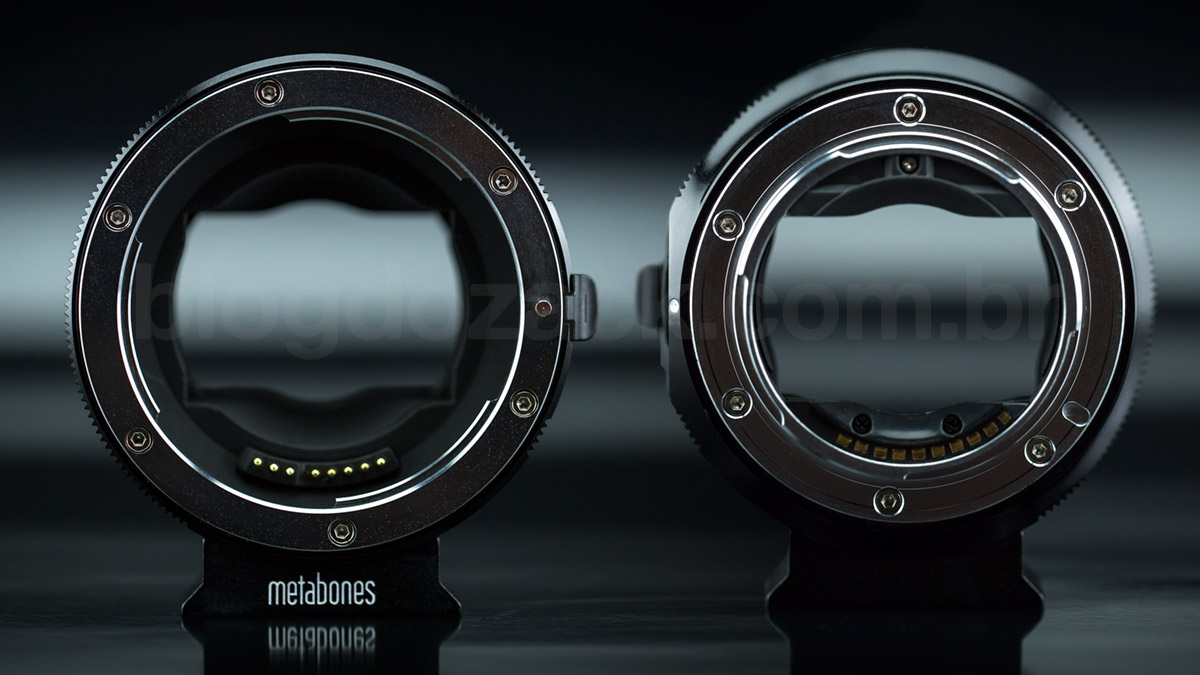
Front and back again: six screws holding each mount in place, what I expected to mount my thousand dollars EF L series lenses.
Overall the Smart IV leaves a positive feeling. It costs US$399 and my high expectations were met. It’s solid on the outside, well done inside, with no loose ends nor scraps of plastic for a perfect finish. The case itself is a lesson to Canon: a hard, durable plastic for safekeeping the adapter forever. It’s a good accessory for every A7 user, bringing all the EF lenses to the Sony court.
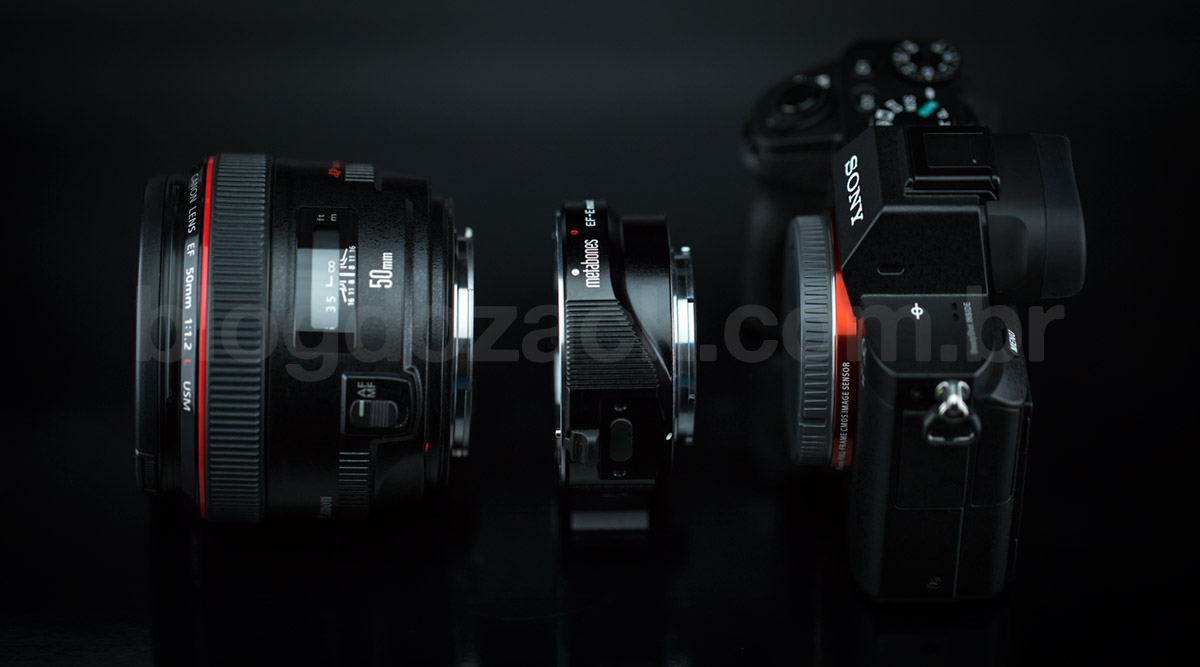
My main concern with any adapter is about the mount quality. I remember the first time I mounted an adapted Nikon Ai-S on my Canon EOS, it bent and required a lot of force to be removed from the camera. Or even recently with a Vello Nikon G to EOS: these lenses have a rubber piece near the mount for sealing, the fit is very tight with the adapter. Only a handful of times this pieces work perfectly togehter, making it hard to recommend for everyone.
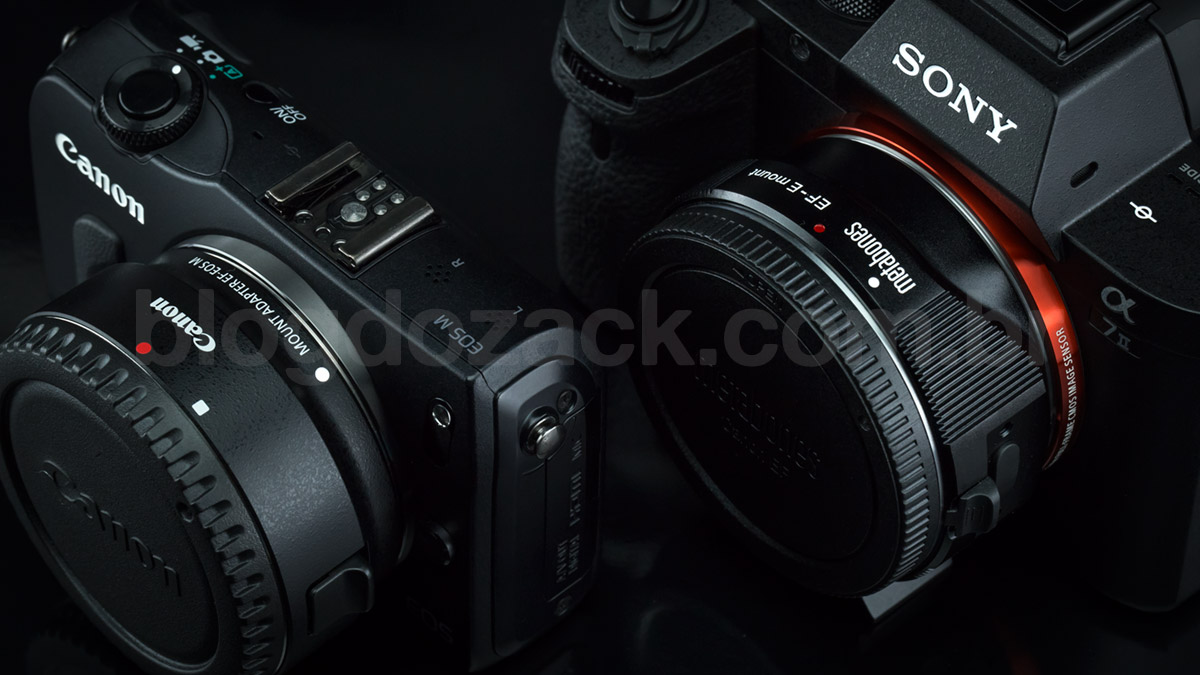
But happily that’s not the case with the metabones Smart IV and the Sony A7II. Different from a simpler “lens ring”, the meta is a “mount adapter” made to stay on your camera longer. It mounts perfectly on the E-mount with a tight yet light movement. It’s just like native FE lenses: align both white dots and turn, with minimum pressure. It’s the same movement for mounting and unmounting, and it won’t damage any of the pieces. It feels solid once it’s attached to the camera.
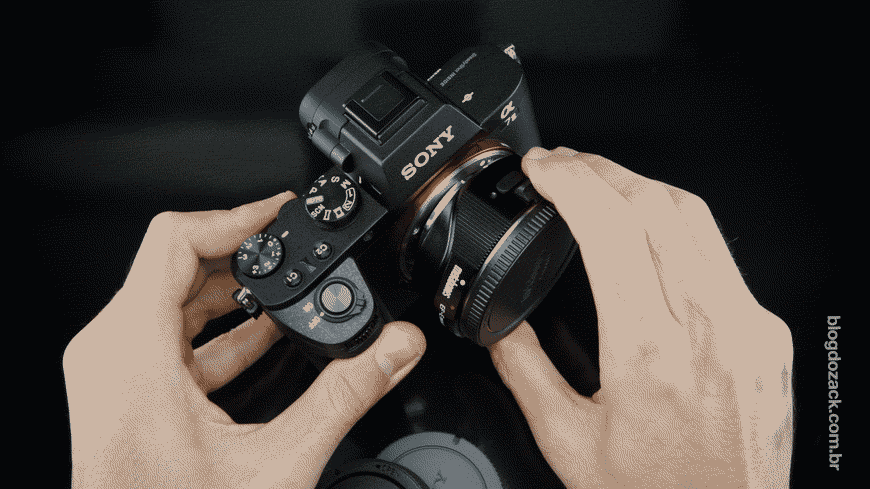
It’s almost the same on the lens side. Weather seal-less lenses like the EF 85mm f/1.2L II USM (metal mount, no rubber gasket) are light and smooth. It’s a hair tighter than my Canon EOS 6D mount, but Canon is known for the fast/precise/smooth EF mount, so I wasn’t expecting the metabones to feel as great. But it works, no problems here.
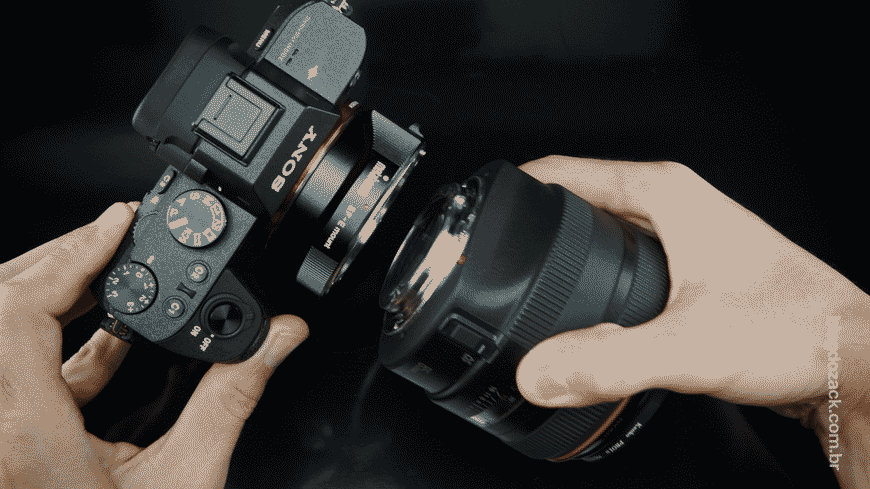
Weather sealed lenses with a rubber gasket around the mount are as light to mount: align, twist and turn. Of course, I haven’t been using this adapter for the past twenty years to know if it’s going to last. But it feels premium, a proper adapter between your expensive camera and lens.
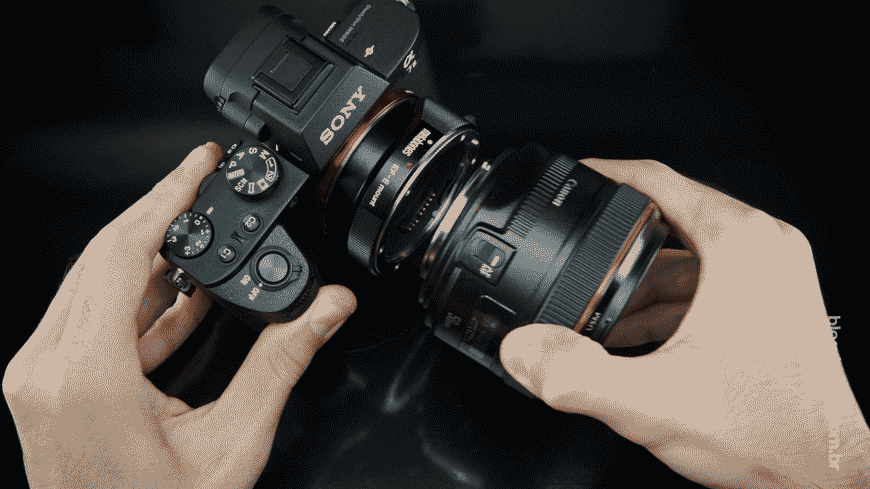
Finally plastic lenses like the EF 50mm f/1.8 II are faster. It’s good to mention the Smart IV is compatible with EF and EF-S APS-C lenses. There’s room for the rear EF-S rubber piece to fit and the camera can be programmed for an APS-C only frame. Just keep in mind the Sony APS-C size is 1.5x, while the Canon circle is 1.6x. Depending on the lens model some vignetting might occur.

My second concern is with the electronic controls like aperture, stabiliser and the ridiculous auto focus. The first two work as advertised. If your lens features an IS module, it’s active when the lens switch is “ON”. The built-in A7II SteadyShot turns itself on only if the lens is switched to “OFF”. To switch both off you have to set the SteadyShot menu, a slow process. But it works perfectly setting the aperture for proper exposures, and that’s more important than any other feature.
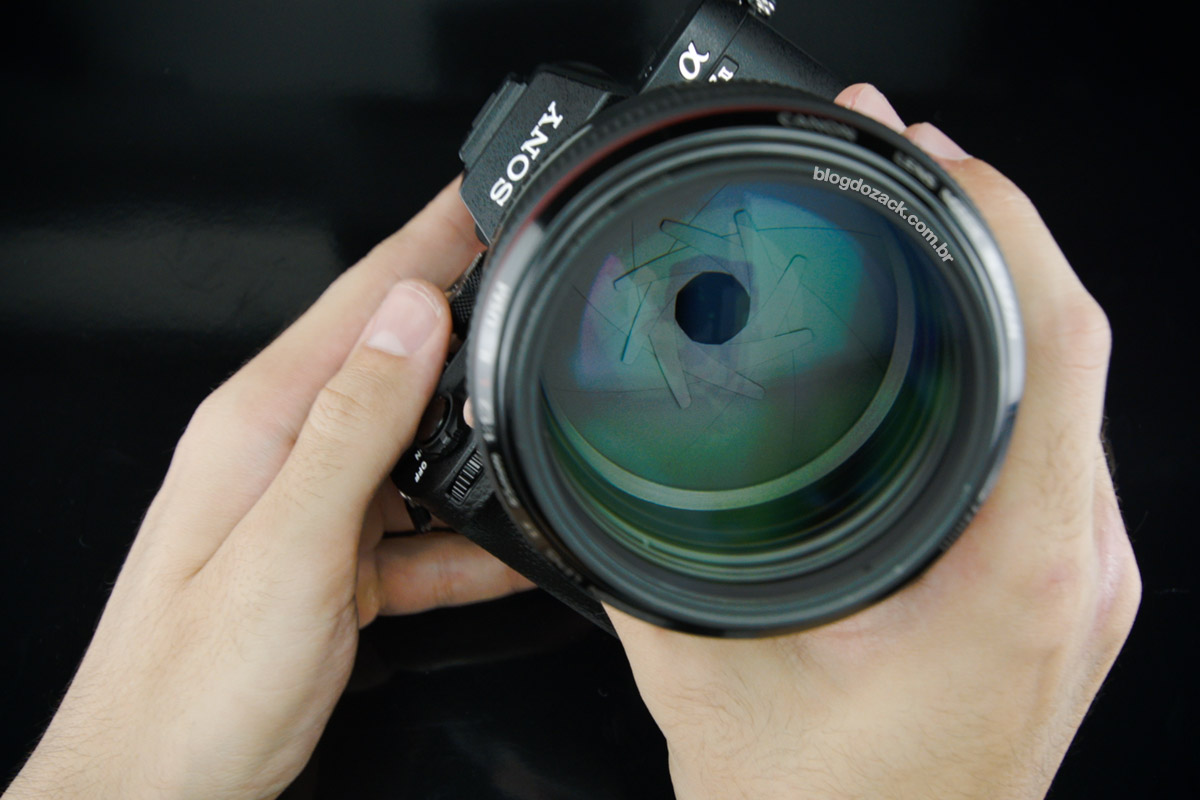
But the AF is an unfortunate function that should have not been included. The A7 series AF is not great to begin with: the classic A7 with phase detection gets lost easily and the R and S models suffers under low light or contrast. And fitted with a metabones adapter it’s just dreadful: extremely slow and most of the time completely unreliable! I know they warn us about it’s limitations on their website, but it’s an unfinished solution that shouldn’t be there.
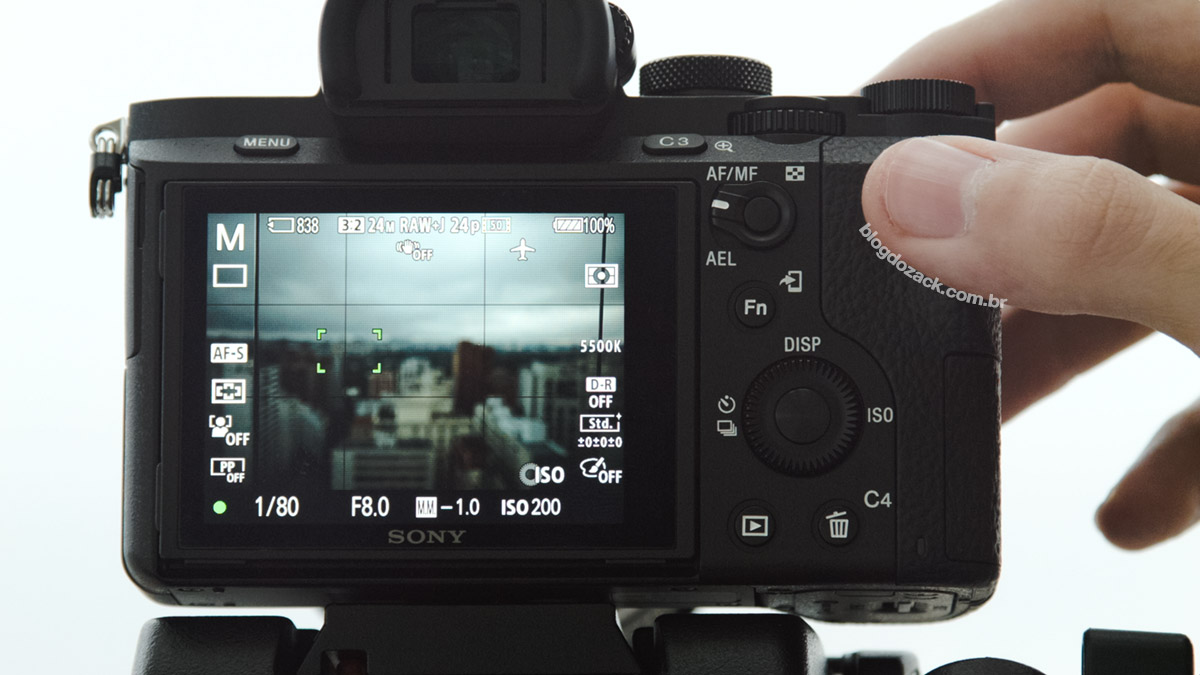
Confirmed focus… REALLY?! :-D
Every time you turn the camera ON for the first time it uses the AF to “calibrate” the lens. It goes back and forth a few times and doesn’t lock. So forget about using it on the fly: every first tries it’s going to miss after the camera boots. After the so called calibration, you can try focusing on something. Depending on your lens and the distance between MFD and infinity, it can take three seconds like the EF 24mm f/1.4L II USM, or up to seven on the EF 70-200mm f/2.8L II IS USM. And it locks anywhere it choses too: the closest subject, the brightest, behind the subject, on sharp bokeh balls… It’s slow and unreliable, so what’s the point? Stick to your Canon for full frame lenses.
Compared to a DSLR even in contrast Live View mode, it just can’t compete. The EOS 6D seems fast using the contrast Zone mode compared to the adapted A7II. And don’t even mention the Quick mode on a DSLR with Live View: the time it takes to raise the mirror, lock focus and turn the preview back on is a fraction of the time the A7II takes to simply boot.
There’s no explanation. On the regular A7 (not R nor S), the phase detection points should help set the contrast detection on the right direction, but they’re completely shut down. metabones didn’t manage to completely hack the Sony AF and should have left this function disabled. You have been warned and the examples are clear: the Smart IV is made for aperture control and some IS, not AF.
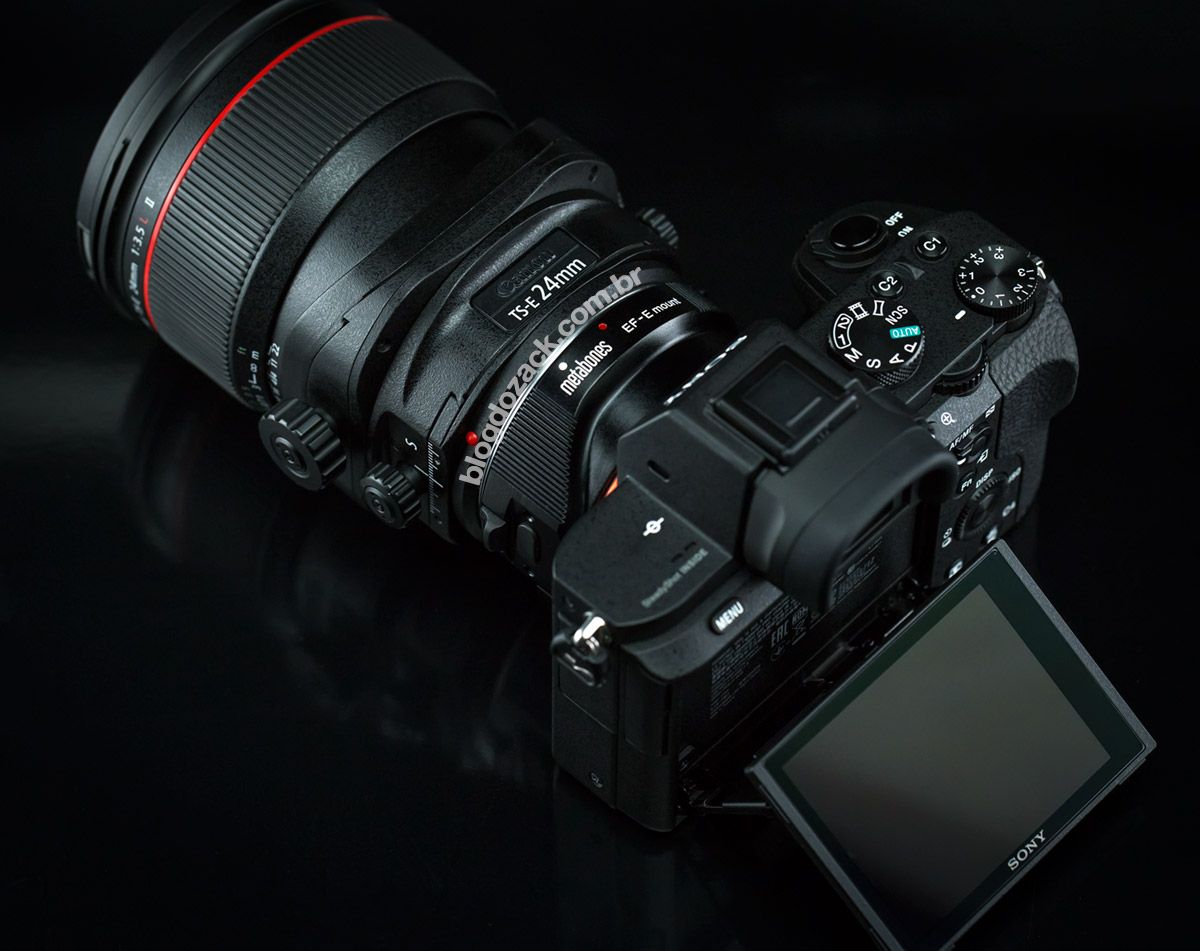
Finally my last question is about the optical performance of such adaptation. Optical performance on a mechanical adapter? Yes! The flange distance (between lens and image plane) might be compensated by an adapter, guaranteeing infinity focus. But optically other properties are not taken into consideration and sometimes we loose sharpness and resolution, especially around the corners on wide angle lenses that were made for film cameras, not precision image CMOSs.

”A telecentric lens is a compound lens which has its entrance or exit pupil at infinity; in the prior case, this produces an orthographic view of the subject. This means that the chief rays (oblique rays which pass through the center of the aperture stop) are parallel to the optical axis in front of or behind the system, respectively. The simplest way to make a lens telecentric is to put the aperture stop at one of the lens’s focal points.” (wikipedia) Let’s take a look at the diagram:
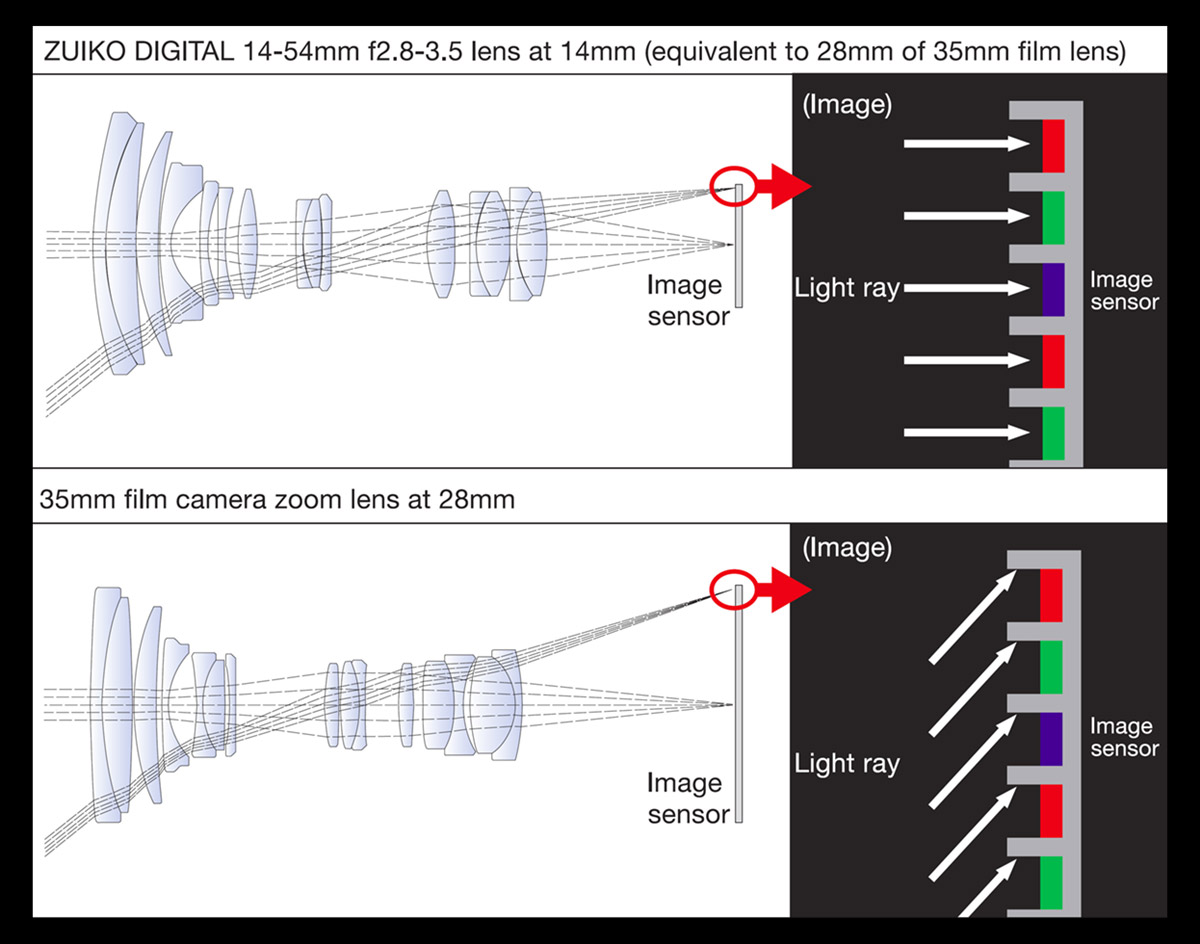
Telecentric lens (above), like the ZUIKO DIGITAL for Four Thirds. (image credits: Olympus America)
Newer digital native formats are telecentric by design, like Micro Four Thirds. Canon and Nikon on the other hand have to compensate for vintage non-telecentric lenses with especially positioned micro lenses on its sensors, guaranteeing hardware compatibility with most lenses. The 100% digital mirrorless E-mount doesn’t take that into consideration. So automatically all vlog do zack reviews could be invalid if I opted for a Sony A7 for Canon lenses analysis. I can’t say “this lens is bad around the edges” if it was made for a specific brand of camera.
We don’t need trained eyes to see the EF 14mm f/2.8L II USM failing miserably on the A7II + metabones. THE EDGES ARE AWFUL. And it’s not just the edges, but about 30% of the frame edge that simply can’t focus like the Canon EOS. It’s not a focusing issue: the center looks virtually the same. But at the top, bottom, left or right, the A7II doesn’t compensate for a non-telecentric lens.
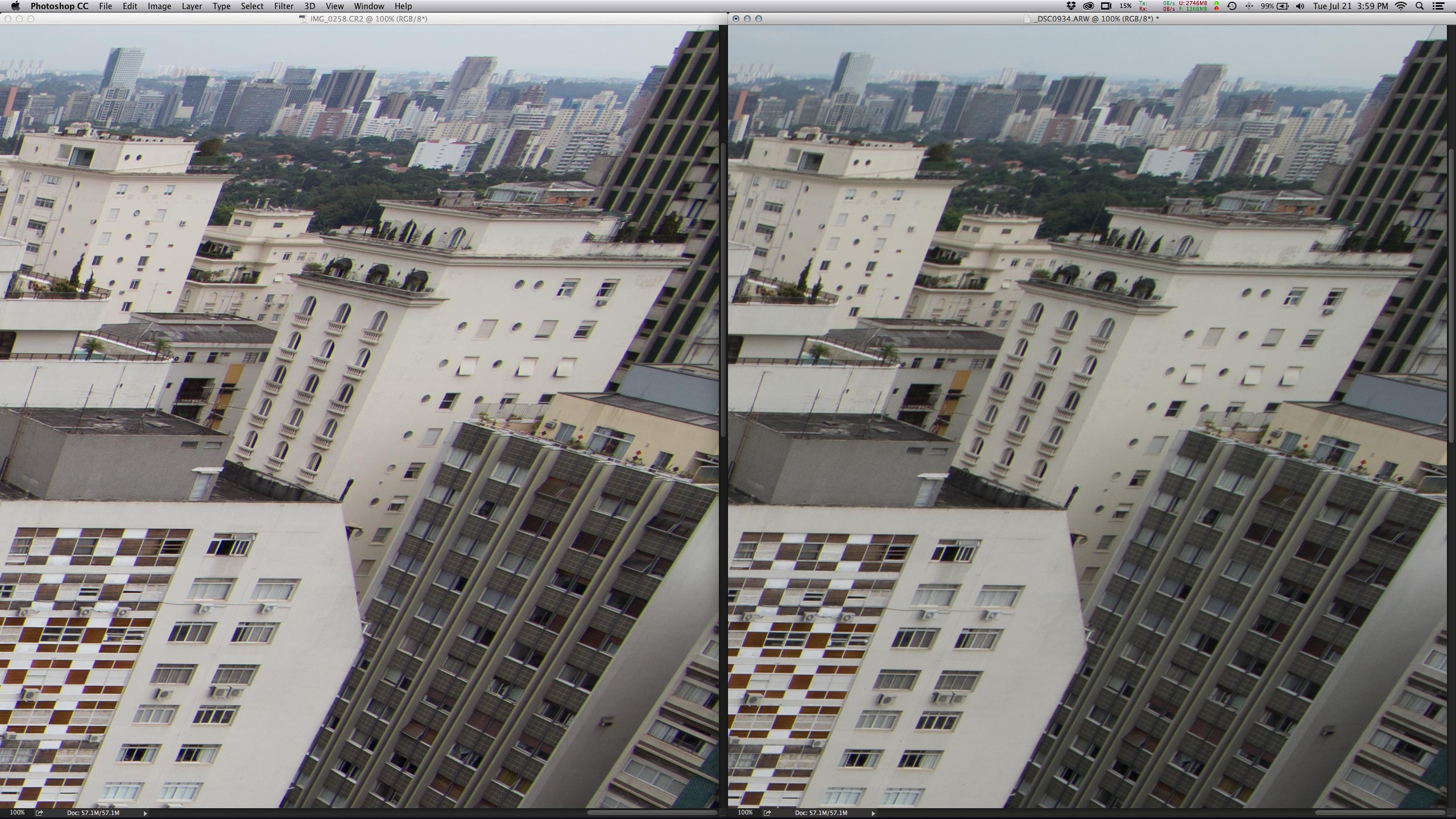
UpperLower left – The A7II is “seeing” oblique light rays, loosing precious resolution. right – We can’t deny the non-telecentric lens issue. Canon fixes this via hardware with micro lenses, the A7II doesn’t.
With the EF 24mm f/1.4L II USM (2008) it gets a bit better. It’s behind the native Canon camera, but better. It’s interesting to see how the A7II is actually sharper around the middle of the frame and generates moiré, as I noted on its own review. But on the upper right corner, around the apartment curtains, we can see how sharper the 6D is. It’s unfortunate but it’s true. A win for Canon’s EOS.
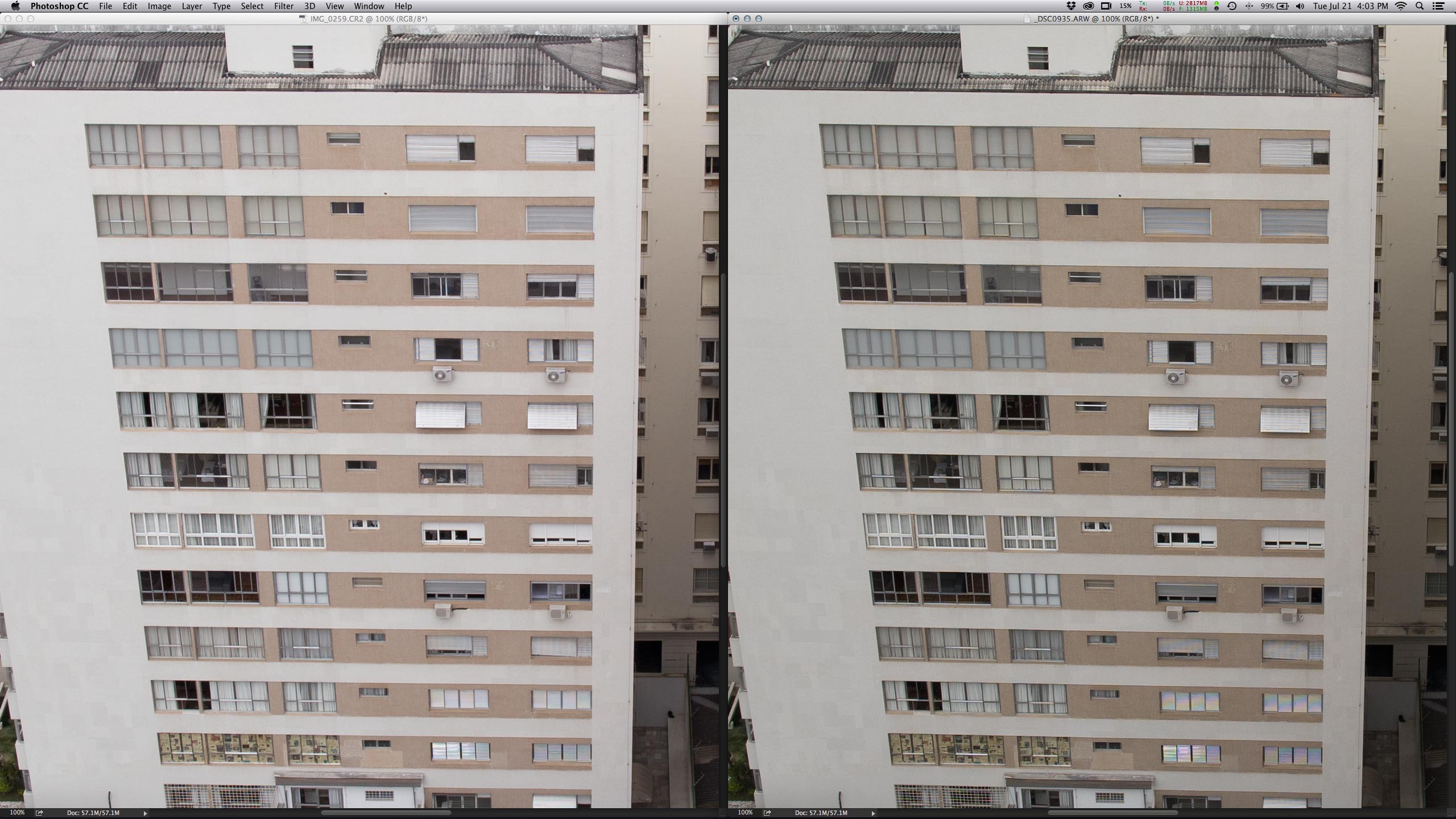
Center – The non-telecentric design makes no difference around the center. But the A7II is a moiré madness.
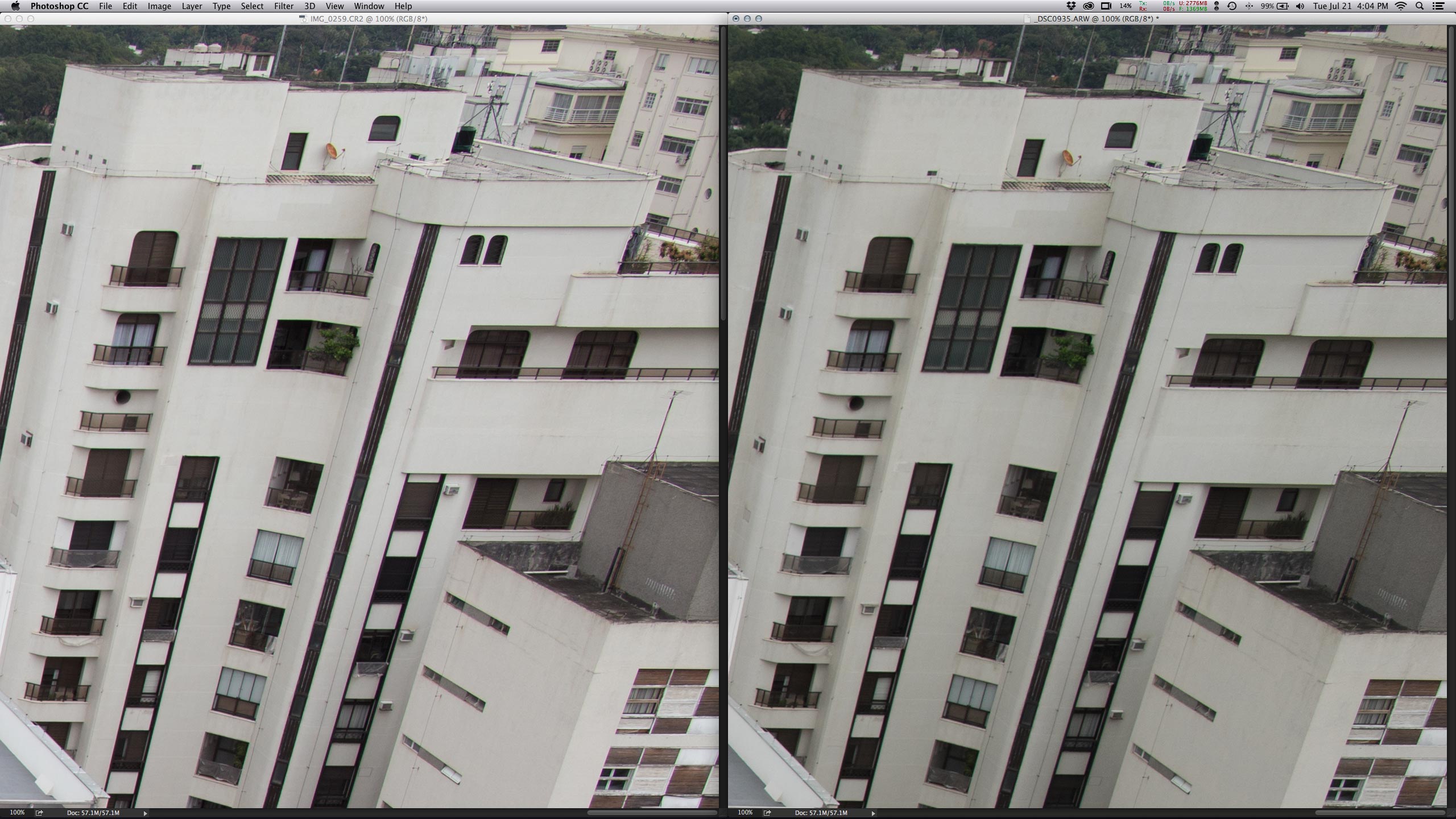
Upper right – But it’s lagging around the edges, the image looks out of focus and some details are lost.
The Canon EF 35mm f/1.4L USM (1998) doesn’t suffer as much. The A7II is sharper but generates loads of moiré. And that’s worse IMHO. But optically it can handle the adapter.
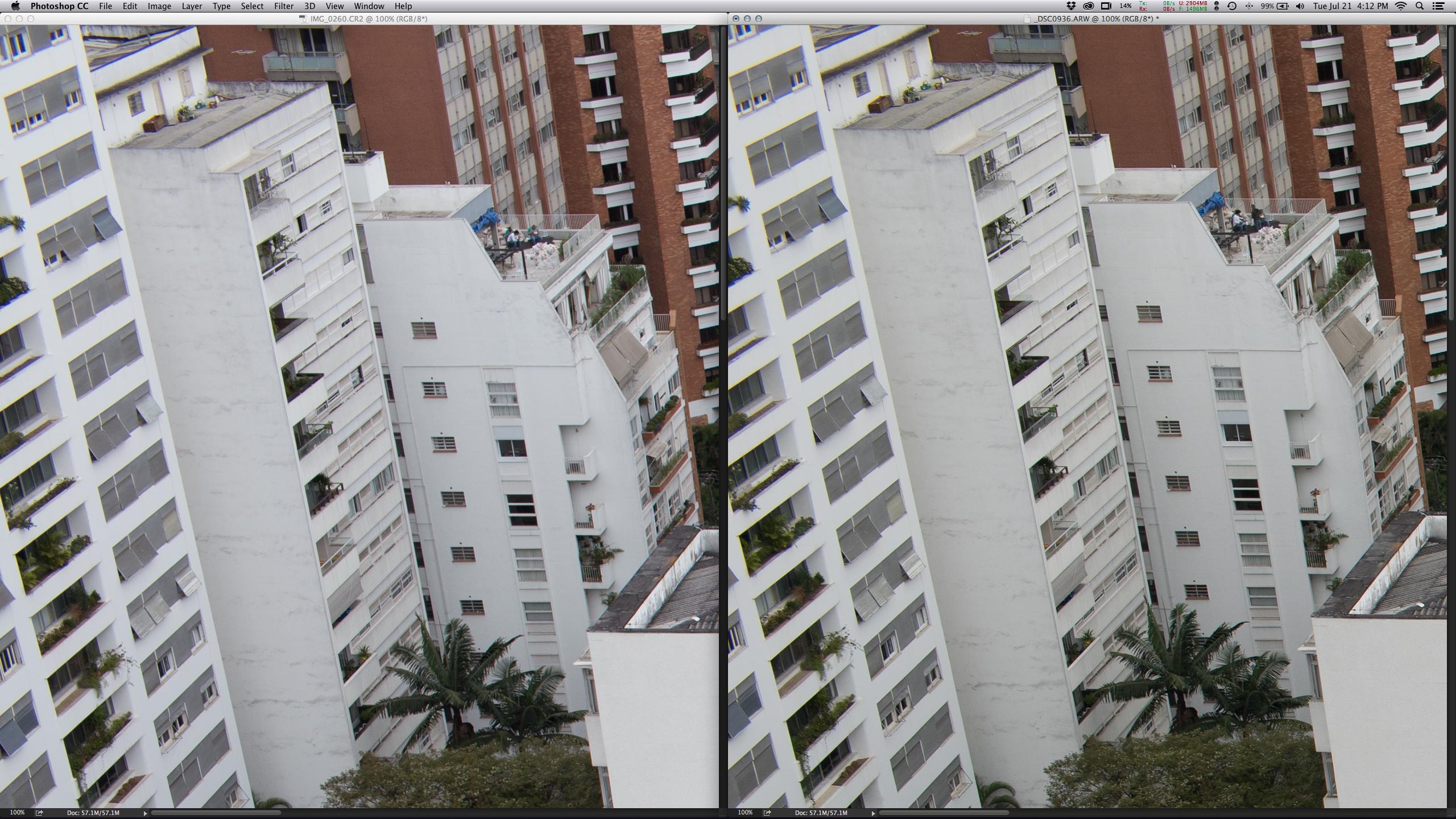
Upper left – 35mm and up shows no loss in performance. The A7II is actually sharper than the EOS 6D.
For tilt-shift lenses, the good news is the metabones IV features an identical circle as the native Canon EF mount. The edges doesn’t vignette like the older adapter. But with wide angle distances the non-telecentric issue is back and the A7II lags behind the 6D once again. There’s no way out: for anything wider than 35mm, keep your EOS. Or pray for a Zeiss Alpha tilt-shift.
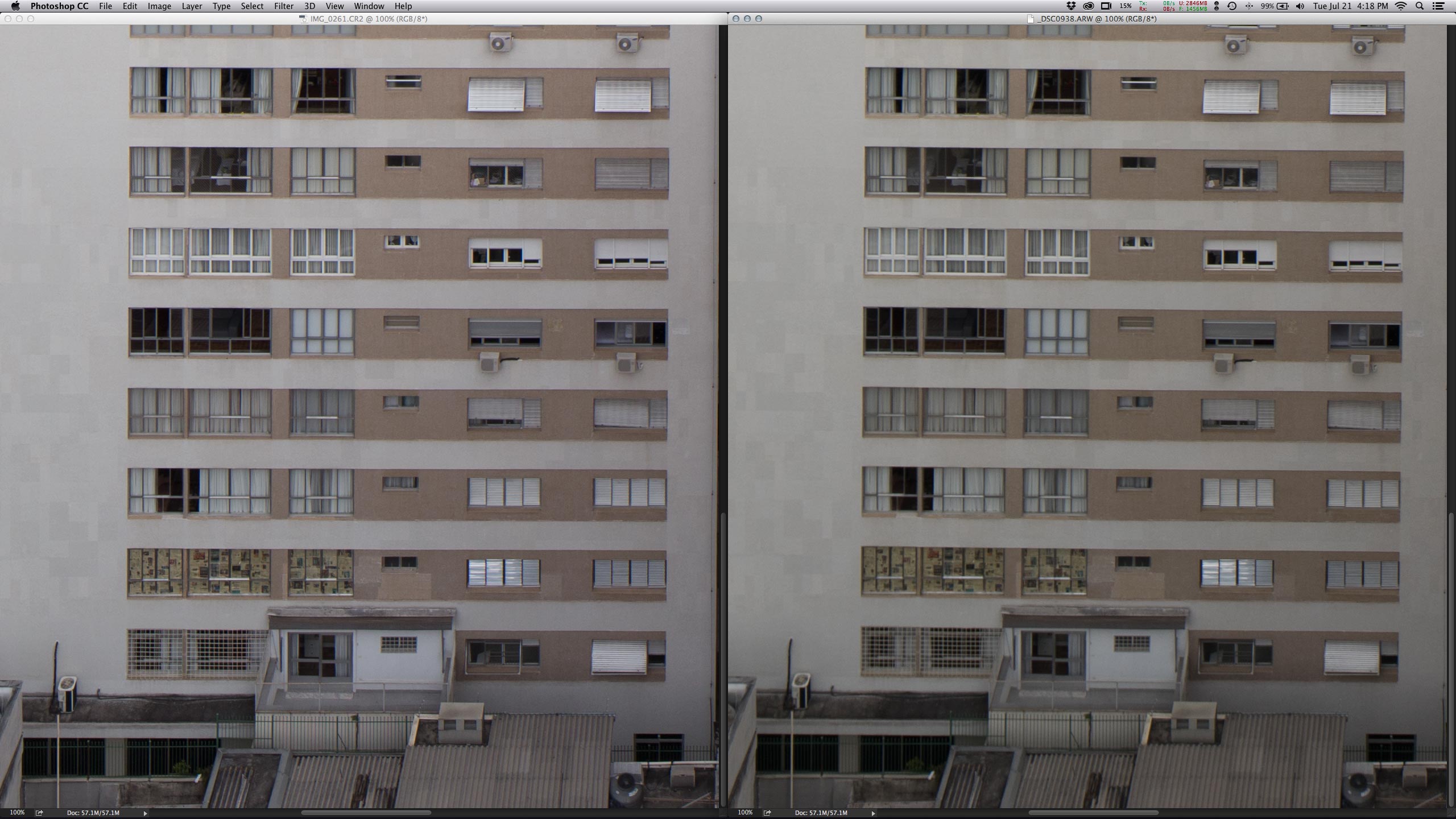
Lower center – Out of axis the optical performance drops on the A7II as the light doesn’t fall straight on the sensor.
Finally from 70mm and up the telecentric debate is over. Files are virtually identical between the DSLR and the mirrorless full frames, if is wasn’t for the A7II crazy moiré madness:
For US$399 metabones supplies you with a solid piece of metal made with loads of TLC. Both mounts are firm and do transform your E-mount camera on a EOS one. But the AF shouldn’t be there and there’s no indication it will get any better. Canon won’t help Sony nor metabones when its auto focus technology is way too valuable on the PRO photography market.
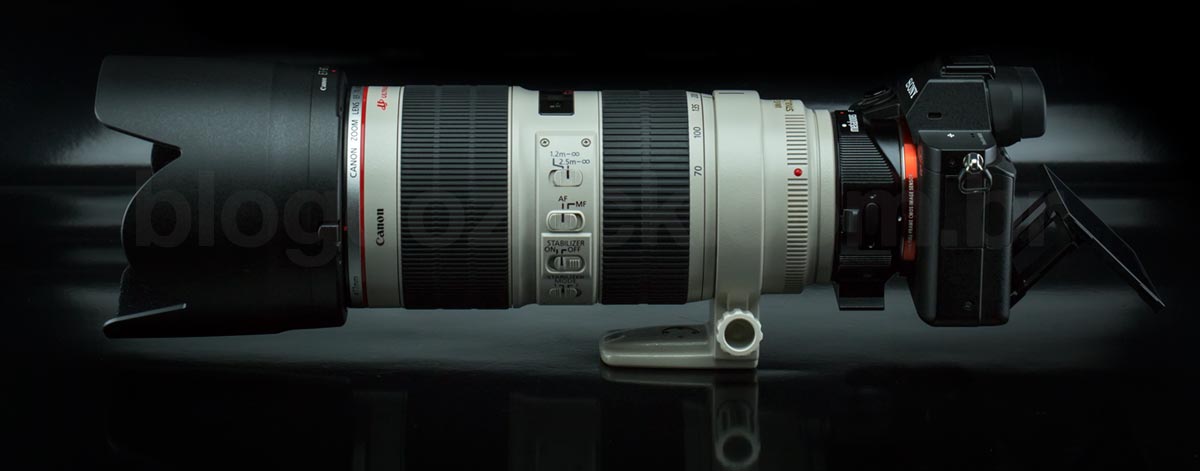
Sony A7II + EF 70-200mm f/2.8L II IS USM: useless without proper AF. Where’s the Sony FE 70-200mm f/2.8 OSS?
But the questionable optical performance worries me the most and I just can’t recommend it for everyone. You’ve seen the limitations and shouldn’t expect it to behave like an EOS. For that, buy a proper Canon SLR. Or wait for Sony’s lenses. It’s as simple as that. And nice shooting!
